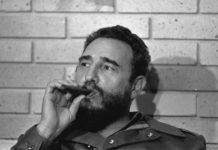Seán Byers – Irish Academic Press, 2015 , €24.99
his book is a fresh and insightful study of a central figure in Irish communism. Seán Murray joined the republican movement in his native Antrim in 1917, at the age of 19. In 1918 he participated in the general strike against conscription, had his first introduction to Marxism through reading James Connolly and became a volunteer in the 2nd Antrim Brigade of the IRA.
During 1920 he was arrested on his way to take part in an ambush of a British Army patrol and spent a year in Crumlin Road Jail. Released during the Truce, he was one of the few members of the IRA’s 3rd Northern Division to oppose the Anglo-Irish Treaty but still took part in the abortive offensive against the new Northern Ireland state, of May 1922, when both pro- and anti-Treaty forces co-operated with clandestine support from the Dublin government.
In the face of brutal repression Murray was one of a number of republicans who emigrated, in his case to Glasgow. By 1926 Murray had joined the Communist Party of Great Britain, become a delegate to London Trades Council and taken part in the General Strike. During 1928 he was a student at the Lenin School in Moscow. Over the next three decades Murray was a leading left-wing activist, becoming general secretary of the new Communist Party of Ireland from 1933-1941.
Seán Byers locates Murray’s politics firmly in both his experience of republicanism and the Irish revolution and his immersion in international communism. Though the communist movement in Ireland was small it had wide horizons and communists were involved in struggles from the Belfast Outdoor Relief strike, to housing agitation in Dublin, miners strikes in Castlecomer and opposition to fascism (both domestic and international). The communist Irish Workers Voice was a campaigning paper and one of the few voices exposing brutality in the industrial school system during the 1930s. Irish communists were central to building support for the Spanish Republic after 1936, and as Byers shows, Murray was one of the few to argue publicly with republicans during 1940 about the dangers of their dalliance with Nazi Germany.
Despite the numerical and electoral weakness of the Irish communists they met ferocious opposition from both Irish states, and from the Catholic Church. (Murray was one of those who physically defended the party’s Dublin offices when they were besieged by mobs in 1933.) The party’s own chroniclers have rightly lauded these aspects of its history. But the CPI was also absolutely loyal to the model of socialism being constructed in the Soviet Union. This meant being uncritical of the twists and turns of Soviet foreign policy, even where this entailed confusing and contradictory policy changes, most notoriously the Hitler-Stalin pact.
Evidence of Stalinist repression and brutality were dismissed as reactionary propaganda and socialists who disagreed denounced as fascists. As a result some have crudely dismissed the Irish party as simply local agents of Moscow. Byers’ book in contrast, is a model of balanced political history. He recreates the story of Murray’s activism in a new and insightful way because of his skilful use of Comintern archives, police reports (from both north and south), internal party correspondence and Murray’s own papers. This book is not only a warts and all recreation of the life and politics of Seán Murray, but also the story of an attempt to build a revolutionary movement in Ireland which activists of today would do well to read and learn from.
– Brian Hanley





